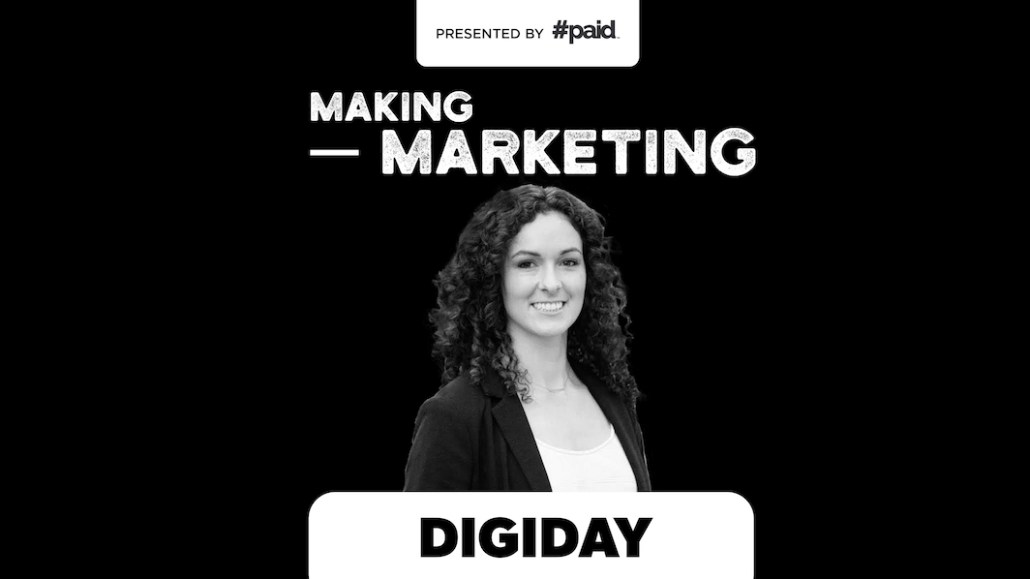Kiva Confections co-founder Kristi Knoblich Palmer on reforming cannabis’s image

Subscribe: iTunes | Google Play | Stitcher | RSS | Anchor
Even in states that have legalized marijuana, opening a business that sells it can be hard.
Some of it, according to Kristi Knoblich Palmer, the co-founder of Kiva Confections, which makes edible THC products, is just down to people not wanting cannabis retail in their backyards.
For a time, even Instagram was skeptical of letting Kiva’s products — mints, gummies, and chocolates — show up on their platform. “Our account kept getting shut down,” said Knoblich Palmer, even though they were “keeping it informative, all about education — and then you’d look at other pages that weren’t getting shut down and weren’t getting flagged, and they were racy and inappropriate.”
Still, her company’s answer was to keep graduating marijuana’s image. “We really have to act professionally and go above and beyond to make ourselves look professional, to act professionally, and to help overturn that stigma,” said Knoblich Palmer, who launched Kiva in 2010.
That starts with the packaging, where 95% of Kiva’s brand image happens. “Having a beautiful package was the front door for the consumer,” said Knoblich Palmer. “It had to step up the edibles category as a whole and really let edibles finally sit in a different part of the mind for consumers.” Beyond that, down-to-the-milligram precision in THC dosage (“everybody had those college experiences” of having a bit too much) goes a long way in building trust with consumers.
On this week’s episode of Making Marketing, Knoblich Palmer talked about the responsibility she feels when marketing a product that some people still oppose, how the company started in her kitchen, and what her vision for the company in five years is.
Here are a few highlights from the conversation, lightly edited for clarity.
Turning a reputation around
“We had to help edibles make a complete 180 in terms of their reputation. So having a package that was beautiful, trustworthy, professional and informative from the get-go was a non-negotiable. That definitely had to happen in order for us to accomplish our goal.”
Marketing down to the milligram
“I would say our packaging did 95% of our marketing. We were one of the very first companies to label milligrams of THC on our packaging. And we kept the consistency in our products over every single batch. So if the label said 60 milligrams of THC, there really was 60 milligrams of THC in the pack. Delivering on that promise every single time made consumers really start to pay attention and that spread through word of mouth for us.”
The nightmare scenario
“I think we get grouped in with Big Tobacco and there’s an assumption that cannabis companies want to market to kids. The nightmare scenario would be being accused of marketing to children. I think that’s the nightmare scenario for any cannabis business. There’s so many adults out there that really are amazing consumers for us and still don’t have access to cannabis.”
Playing a part in cannabis acceptance
“Your liberal folks are super excited to jump into the cannabis world. Marketing people, salespeople, they all are like ‘how can we get into cannabis?’ and beating down your door because cannabis is so fun. Then conservative folks, such as your cities in the state of California, still have this heavy stigma towards cannabis. And they’re still going ‘oh my gosh, not in my backyard. Put cannabis retail out in the sticks in an industrial neighborhood, no signs, 24-hour security, and extremely high taxes!’ So you’ve got this change of thinking in our culture, a general movement towards greater acceptance, but we are not there yet. So there’s a lot of responsibility right now in the cannabis industry not to screw it up, not to make the industry look bad. We really have to act professionally and go above and beyond to make ourselves look professional, to act professionally, and to help overturn that stigma.”
More in Marketing

Rembrand’s CEO wants to grow virtual ad placements in streaming, and he’s looking elsewhere for models
Omar Tawakol wants to improve advertising within the streaming world, and is working with advertisers and publishers to improve that experience.

Marketers are keen to use generative AI in ad campaigns, but hidden costs lurk
Marketers across the industry want to use AI to cut down on time spent in creative production. It’s not so simple in practice.

2025 was rough for Target. It could also be the year when its turnaround began
Much of the front half of the year for Target was defined by the company’s decision in January to pull back on DEI initiatives.





